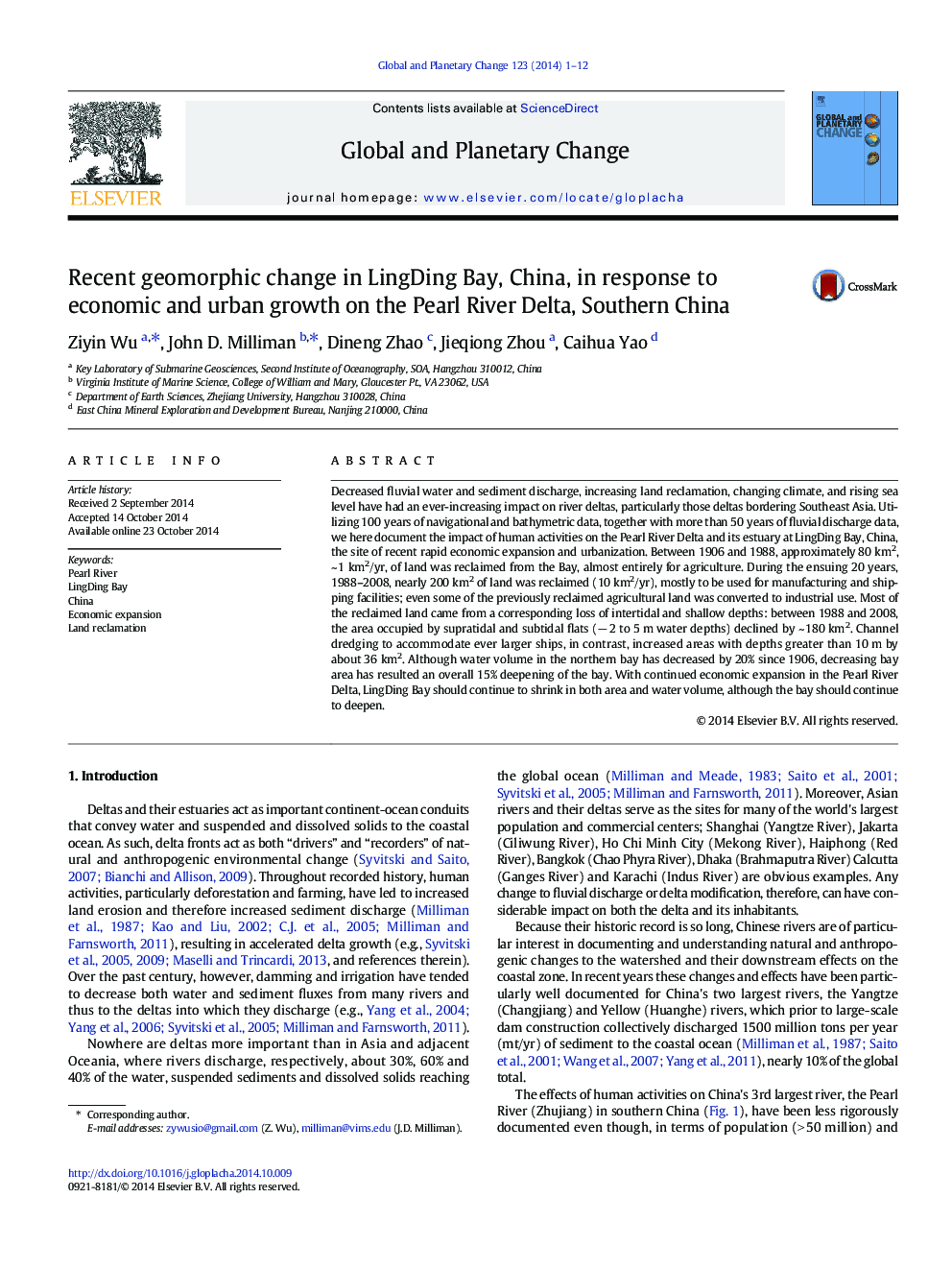| Article ID | Journal | Published Year | Pages | File Type |
|---|---|---|---|---|
| 6348126 | Global and Planetary Change | 2014 | 12 Pages |
Abstract
Decreased fluvial water and sediment discharge, increasing land reclamation, changing climate, and rising sea level have had an ever-increasing impact on river deltas, particularly those deltas bordering Southeast Asia. Utilizing 100 years of navigational and bathymetric data, together with more than 50 years of fluvial discharge data, we here document the impact of human activities on the Pearl River Delta and its estuary at LingDing Bay, China, the site of recent rapid economic expansion and urbanization. Between 1906 and 1988, approximately 80 km2, ~ 1 km2/yr, of land was reclaimed from the Bay, almost entirely for agriculture. During the ensuing 20 years, 1988-2008, nearly 200 km2 of land was reclaimed (10 km2/yr), mostly to be used for manufacturing and shipping facilities; even some of the previously reclaimed agricultural land was converted to industrial use. Most of the reclaimed land came from a corresponding loss of intertidal and shallow depths: between 1988 and 2008, the area occupied by supratidal and subtidal flats (â 2 to 5 m water depths) declined by ~ 180 km2. Channel dredging to accommodate ever larger ships, in contrast, increased areas with depths greater than 10 m by about 36 km2. Although water volume in the northern bay has decreased by 20% since 1906, decreasing bay area has resulted an overall 15% deepening of the bay. With continued economic expansion in the Pearl River Delta, LingDing Bay should continue to shrink in both area and water volume, although the bay should continue to deepen.
Keywords
Related Topics
Physical Sciences and Engineering
Earth and Planetary Sciences
Earth-Surface Processes
Authors
Ziyin Wu, John D. Milliman, Dineng Zhao, Jieqiong Zhou, Caihua Yao,
